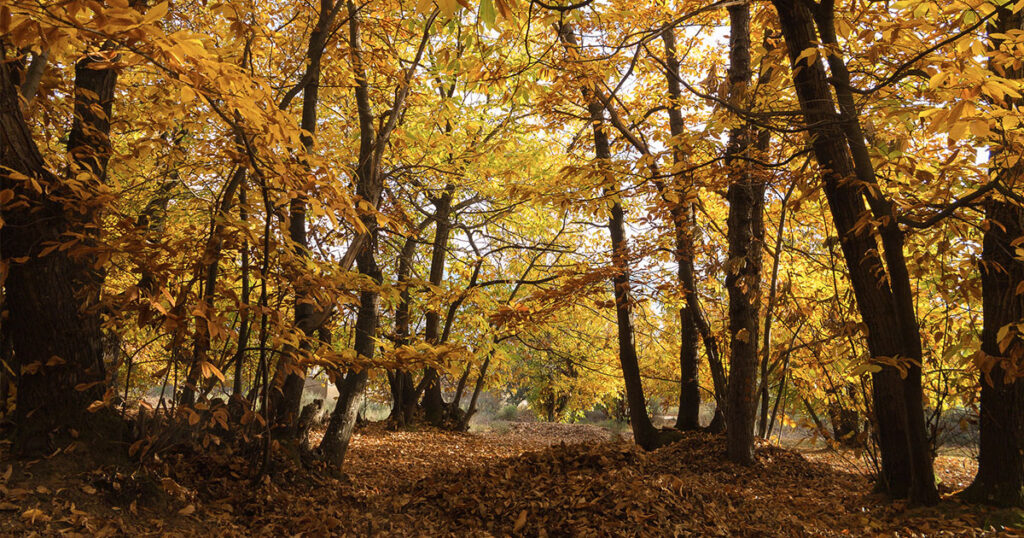
Even if we haven’t recently been to the woods, writes Jill Lepore in The New Yorker, we know that the forest is disappearing. We all know it. Yes, trees are planted to replace trees cut down, but even a collection of trees planted and watered and sprayed and counted and cared for is not a forest, which is a world containing worlds. We lose the forest and we lose more than hardwood; we lose diversity. We lose, too, our fellow inhabitants of the Earth. So writes Lepore. I almost expected to read that we lose our helpmates, but Lepore and the scientists and writers she mentions don’t go so far. One of those experts does, however, talk about the “mother tree.” Lepore suggests that characterizing the tree as a nurturing, feeling, caring entity might not be good science, but as literature for a political cause, it’s not bad. Nothing else has worked to rally the loyal and concerned to the trees’ plight, and to ours.
But mothering? We expect it, yes. We praise it, true. We evoke a Mother Earth that nurtures and nourishes us. But is that really enough to bring us together? A mother’s love, we are told, occurs automatically and unconditionally, more a given than a right, occurring sometimes to our relief, sometimes to our chagrin. Yet when tragedy befalls, it is usually not the mothers we feel for, but the children—both those left and those lost.
In 10,000 years, the world has lost a third of its forests, most of them in the past 300 years. In the United States, land was cleared for farming and wood harvested for houses and heat. The clearing of the land was great work, great progress, and great loss. In Spain, the forests went to build ships for exploring and conquering new lands. Work, progress, and loss. It’s a cycle.
This past winter, on a wooded hillside near my home—a mossy mysterious hillside, dark, shadowed, full of hidden dips and hollows and traversed by a rutted gravel road that was overhung by chestnut trees—on this hillside, logging trucks appeared one morning. Within days, the chestnut trees beside the road were felled. Soon, deep new tracks led into the woods. More trees were felled, and in the new light sifting in, the colors were brighter, the contrasts stronger, the view longer. Toppled trees lay where they had fallen, and from the road I saw a tangle of trunks and branches. Soon logs were piled by the road, neatly cut into regular lengths, round end out, two feet in diameter. Were these the mothers? Clearing forests influences the force and direction of the winds, Lepore informs us, and I could almost hear the wind that would pitch into the seedlings and saplings now alone on the exposed hillside, and give them a what for. Do they mourn their mothers or are they only glad to survive?
Eight months later, on a misty, chilly October morning when ripe chestnuts are falling from trees in nearby lanes, I return to the hill. In the poem “As I Walked Out One Evening,” W. H. Auden writes: “The crowds upon the pavement / Were fields of harvest wheat.” But when I walk out that morning, walking toward the mossy hillside, the trees I pass are a throng of spectators, a mix of the aged and the young crowding the road. Some lean forward, eager, on slender trunks; some shy away, twisting backward; some stand tall and remote. These are my crooked neighbors. No wind that morning, just mist rising among the birch, beech, bay laurel, chestnut, walnut, ash, and oak, the alder and the poplar, the willow.
At the crest of the hill, the piled logs are gone, and rains have smoothed the tracks to the clearing. Dead leaves have fallen. The contours are softer. The mossy hillside in the early light is full of dips and hollows, royal ferns and bracken ferns, striped snails and glossy beetles and fat, slick orange slugs like splotches of thick paint. Some tall trees remain. The stumps of the missing trees poke up among splintered branches and chips of bark. I see dandelion, dock, and thistle among chunks of earth and chunks of rock. Nearby saplings reach out to get their balance. Something lost and something gained. New bramble and vines cover the ground, roughly stitching the elements back together.
The tangled piles of sticks and branches too small for harvesting remain. In the soft light, the mounds look like beaver dams here and there on a gray lake. A fanciful vision, though millions of years ago, in the Paleozoic period, this land was under the waters of the Rheic Ocean. Tectonic plates collided, and the ocean closed. Something lost and something gained. It is eight a.m. A chaffinch chirps, a raven takes flight. The droplet-covered web of an orb-weaver spider glistens in the first sun rays. The clearing goes from gray to green. No snow yet to come drifting in, only mist burning off. Warm days lie ahead. The sky above turns blue.

